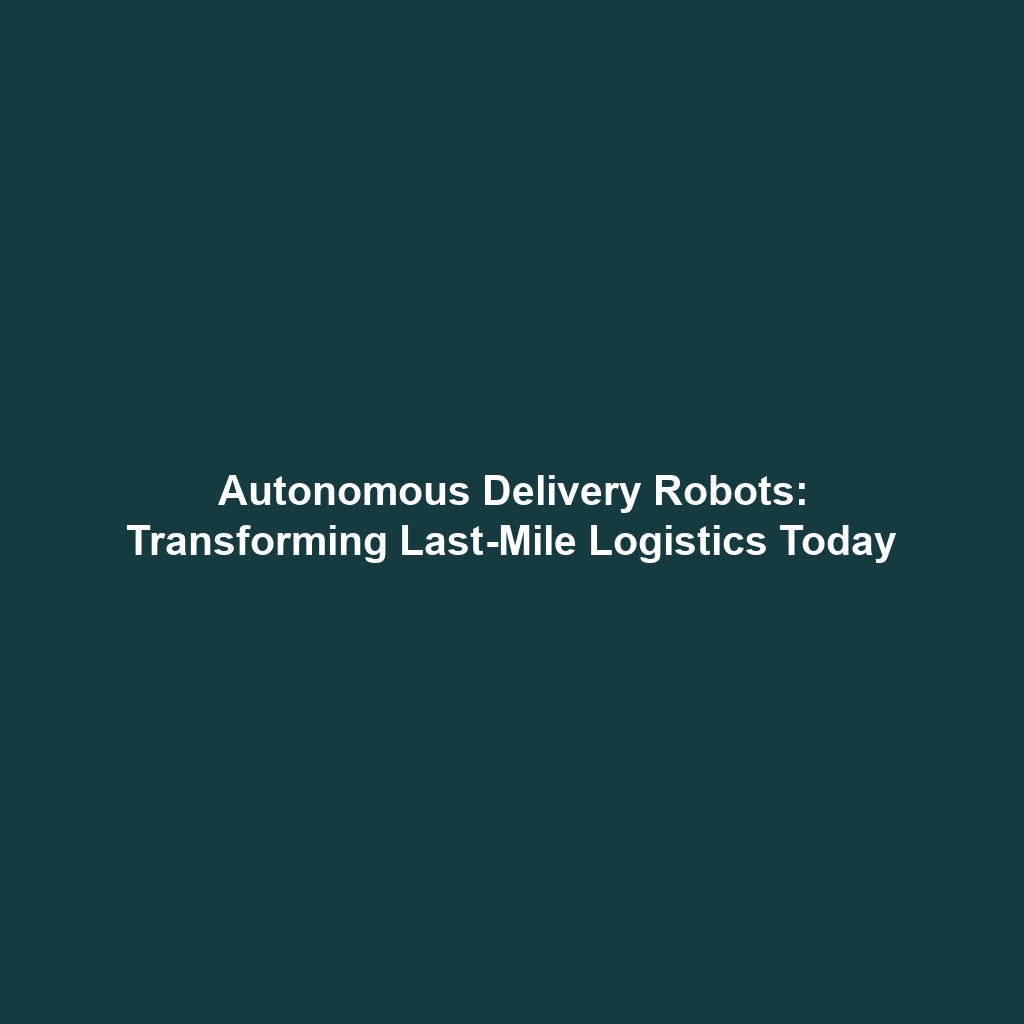Examples of Ground-Based Autonomous Delivery Robots (e.g., Starship Technologies)
In recent years, ground-based autonomous delivery robots have gained prominence as a transformative technology within the realm of Autonomous Robots. These innovative machines, epitomized by companies like Starship Technologies, are redefining last-mile delivery services, making them more efficient, cost-effective, and environmentally friendly. The significance of these autonomous delivery systems cannot be overstated as they represent a fusion of robotics, artificial intelligence, and logistics, paving the way for a future where deliveries can be made without human intervention.
Key Concepts
The field of ground-based autonomous delivery robots encompasses several critical concepts and principles:
- Autonomous Navigation: Utilizing advanced sensors and algorithms, these robots can navigate complex urban environments.
- Obstacle Avoidance: Equipped with technologies such as Lidar and cameras, these robots can detect and avoid obstacles effectively.
- Delivery Logistics: These robots are designed to optimize delivery routes and integrate seamlessly with existing logistics frameworks.
Ground-based autonomous delivery robots are classified within the broader category of Autonomous Robots due to their ability to operate independently and improve operational efficiency across various sectors.
Applications and Real-World Uses
Ground-based autonomous delivery robots like Starship Technologies have found numerous real-world applications:
- Food Delivery: Restaurants and food service providers have begun utilizing delivery robots to provide doorstep service for customers.
- Grocery Delivery: Supermarkets are leveraging these robots to transport groceries, saving time and resources.
- Medical Supplies: Hospitals and pharmacies are increasingly using autonomous robots to deliver essential medical supplies efficiently.
These examples illustrate how autonomous delivery robots are redefining convenience and speed in the delivery service landscape.
Current Challenges
Despite the growing adoption of ground-based autonomous delivery robots, several challenges persist:
- Regulatory Hurdles: Navigating local laws and regulations can be complex and varies significantly by region.
- Technological Limitations: Current technologies may struggle with extreme weather conditions or highly dense urban environments.
- Public Acceptance: Gaining the trust and acceptance of the general public remains an ongoing challenge.
These issues illustrate the ongoing challenges of ground-based autonomous delivery robots within the broader category of Autonomous Robots.
Future Research and Innovations
The future of ground-based autonomous delivery robots is bright, with numerous innovations on the horizon:
- Improved AI Algorithms: Next-generation AI will enhance decision-making processes and improve navigation capabilities.
- Enhanced Battery Technology: Advances in battery technology will enable longer operational times and greater load capacities.
- Integration with Smart City Infrastructure: Collaborative efforts between tech companies and municipalities may yield improved urban navigation systems for delivery robots.
These breakthroughs signify exciting advancements that will shape the impact of autonomous robots in the delivery sector.
Conclusion
Ground-based autonomous delivery robots, particularly those exemplified by Starship Technologies, are carving out a vital niche in the realm of Autonomous Robots. Their applications are growing, and with ongoing research and innovation, these robots are likely to become a staple in our everyday lives. For more insights into robotics and their impact on our future, explore our related articles on autonomous technology and innovations in delivery systems.
Read more about Robotics Innovations

